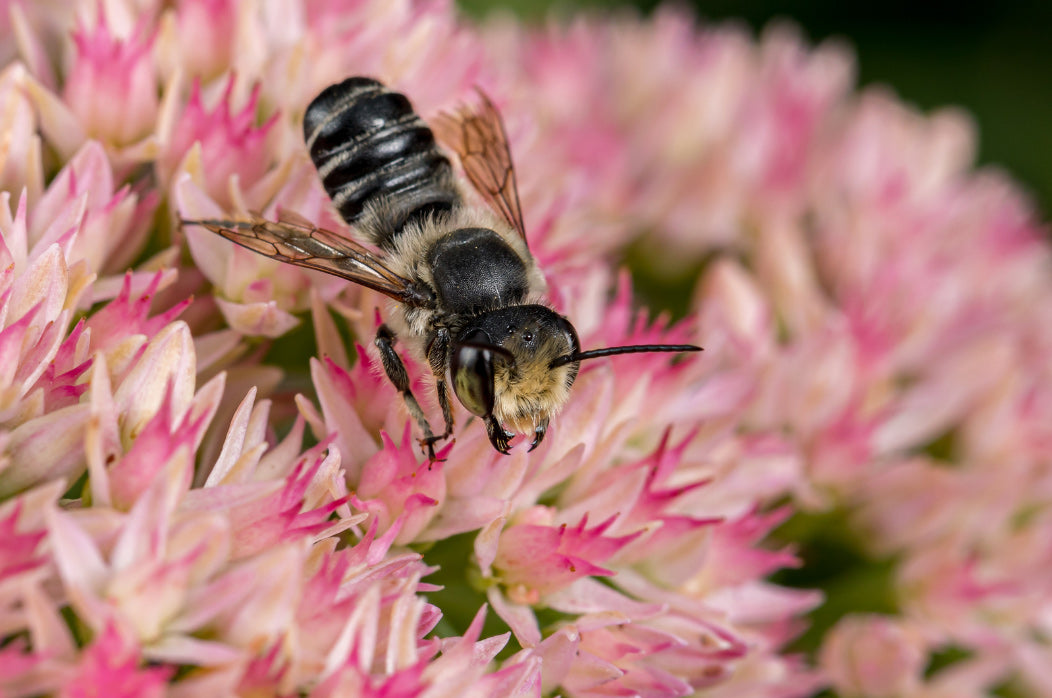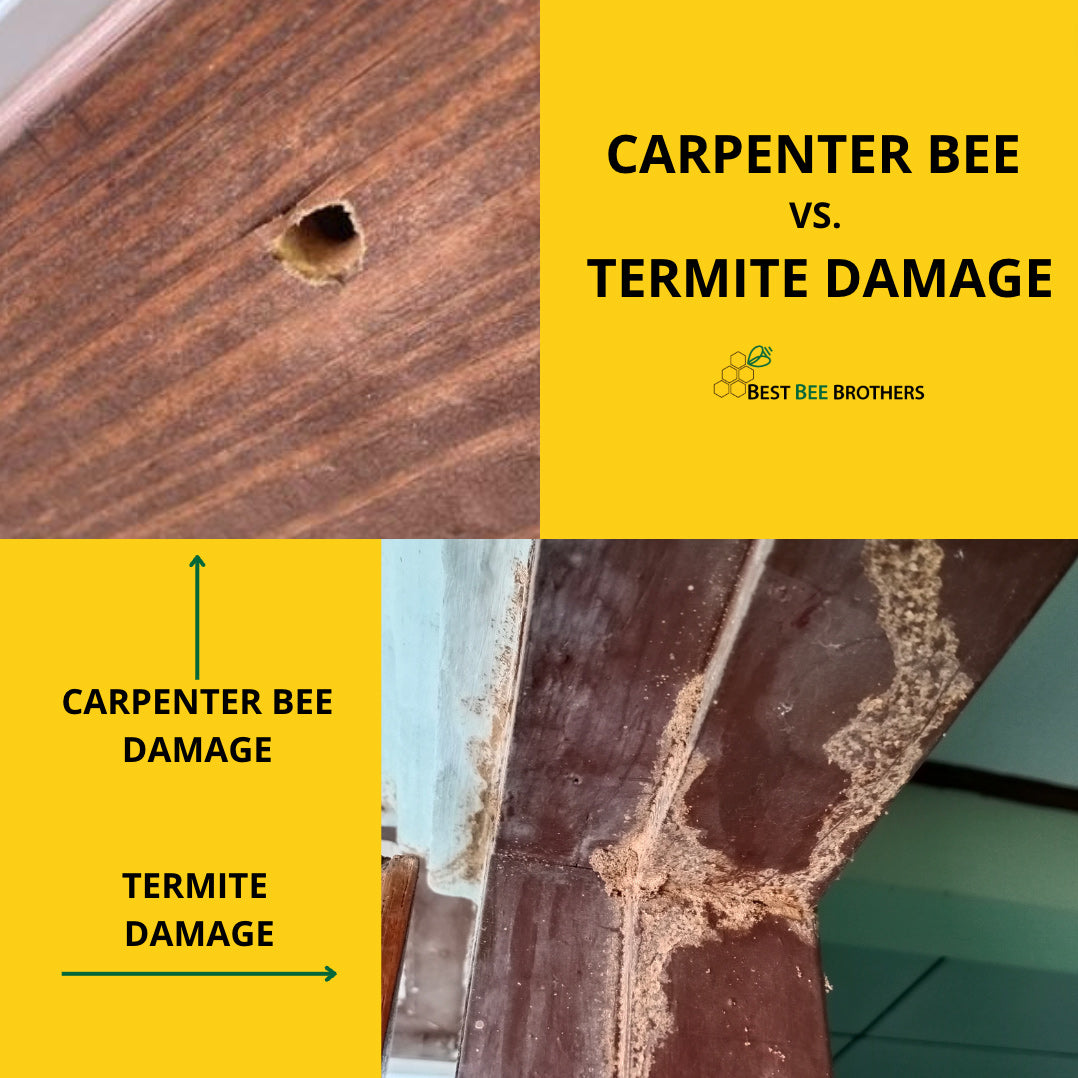Welcome, concerned homeowners, to the buzzing world of Best Bee Brothers! Today, we’re going to tackle a topic that’s sure to give you a case of the heebie-jeebies: wood-destroying insects.
These sneaky little critters may be small, but they can wreak havoc on your beloved wooden structures faster than you can say "termite-tastrophe." But with a dash of knowledge and a sprinkle of prevention, you can protect your property and keep those pesky bugs at bay for good. So let’s dive right in, shall we?
Common Types of Wood-Destroying Insects
If you’ve noticed damage but aren’t sure what’s causing it, let us introduce you to the notorious suspects: termites, carpenter bees, carpenter ants and powderpost beetles. These infamous bugs are among the most common wood-destroying insects that homeowners might encounter. However, it’s important to note that they aren’t the only threats out there.
The world of wood-damaging bugs is vast and diverse, with other species also capable of destruction. From wood-boring beetles to carpenter worms, nature seems to have a limitless army of troublemakers. So, while we’ve highlighted the most likely perps, remember to stay vigilant and keep an eye out for any signs of infestation, regardless of the insect species. Being aware of the potential threats will help you protect your property and ensure the longevity of your wooden structures.
Termites
Ah, termites, the tiny terrors of the wood world. There are many species of these relentless creatures, each with its own set of dining preferences and destructive habits. From subterranean to drywood termites, their powerful mandibles can turn your beautiful wooden abode into a five-star termite resort without your even knowing it. Trust us, you don't want to be hosting that kind of party!
But don’t worry, we’re here to help you distinguish termite damage from that of other wood-chomping villains like our next guest, carpenter bees.

Carpenter Bees
These buzzing critters may look cute, but don't let their fuzzy exteriors fool you. They have a penchant for drilling perfectly round holes into your wooden treasures. If you spot small bee-sized craters on your wooden structures, it’s time to put an end to their artistic endeavors. Learn more about spotting carpenter bee holes and how to repair them.

Carpenter Ants
Next up, we have carpenter ants. These guys don’t shy away from a construction site. In fact, they’re more than happy to set up shop right in the heart of your wooden sanctuary. Look out for telltale signs like mysterious tunnels, rustling sounds in the walls and sawdust-like debris. Of course, if you spot carpenter ants strutting around with tiny tool belts, well, that might be a clue too.

Powderpost Beetles
Perhaps not as famous but no less destructive are powderpost beetles, the daredevils of the insect world. These tiny thrill seekers lay their eggs in cracks and crevices of your wooden furniture or flooring. Once the larvae hatch, they spend their days happily tunneling through the wood, leaving behind a trail of flour-like powder1. So if your floor suddenly resembles a bakery, well…you might have some unexpected houseguests.

Signs of Wood-Destroying Insects
When it comes to safeguarding your wooden kingdom, being able to identify the signs of an infestation is crucial. First and foremost, pay attention to any telltale changes in your wooden structures. Are your floors starting to sag unexpectedly? Is the paint on your walls peeling for no apparent reason? These could be subtle hints that wood-destroying insects have taken up residence.
Aside from general signs of damage, each insect leaves behind a special signature. Learn more about how to tell termite damage from carpenter bee damage here.
Preventing Wood-Destroying Insects
To keep these wood-destroying miscreants at bay, prevention is your best bet. First and foremost, treat your wood with love and care, and it will repay you with strength and durability.
Maintaining a tidy environment is also crucial in preventing infestations. Wood-loving insects thrive in cluttered areas, so keep your surroundings neat and organized. Remove any wood debris, including fallen branches, stumps or old firewood piles, as they can serve as inviting homes for these tiny intruders. By clearing away these potential habitats, you’ll reduce the risk of attracting wood-destroying insects to your property.
Moisture control is another essential aspect of prevention. Fix any leaks or moisture issues promptly, as excessive moisture creates a welcoming environment for many wood-damaging pests. Termites, carpenter ants and other insects are drawn to damp or decaying wood, so ensure proper drainage around your property and address any water-related problems.2 Additionally, maintaining proper ventilation in crawl spaces, basements and attics helps reduce humidity levels and discourage these critters from making themselves at home.
For especially stubborn infestations, you may want to consider using wood treatments, sealants and finishes specifically designed to make your wood less appetizing to those pesky bugs. While Best Bee Brothers prefers a more natural, chemical-free approach, these products may offer you an extra layer of protection, acting as a shield against wood-destroying insects and making it less likely for them to set up camp. For termite infestations, call in the professionals, or try a borate treatment.3
How to Get Rid of Carpenter Bees with Best Bee Brothers
When it comes to battling carpenter bees, one of those pesky wood-destroying insects, we've got your back! At Best Bee Brothers, we’ve developed effective solutions to send those bees packing. From natural repellents to our carpenter bee traps, our products are designed to protect your wooden structures and give those flying bugs a proper eviction notice. If you have trouble with termites, acting fast is essential. Don't delay in calling a termite control professional to help assess the situation. You may also want to research natural remedies to address minor issues.
***
Congratulations, homeowners! You’ve now got the knowledge to identify the criminal trespassers of the insect world. Prevention is key. Using our tips above, like mitigating moisture around your home, especially near the foundation, can help keep your home safe from just about any member of the world of wood-destroying insects. And remember, understanding these tiny terrors and their potential impact will go a long way toward safeguarding your wooden structures. By staying proactive, conducting regular inspections and taking prompt action, you can enjoy a bug-free and worry-free wooden wonderland.
So, what are you waiting for? Get out there and show those wood-destroying insects who’s boss! And if you need a hand with carpenter bees, don’t hesitate to reach out to the team at Best Bee Brothers. Together, we'll keep your wooden haven carpenter bee free and have you buzzing with joy!
- Michael F. Potter, “Powderpost Beetles,” ENTFACT-616, Martin-Gatton College of Agriculture, Food and Environment, University of Kentucky, June 2018, http://entomology.ca.uky.edu/ef616.
- “Wood Destroying Insects,” Cornell CALS, accessed August 9, 2023, https://cals.cornell.edu/new-york-state-integrated-pest-management/outreach-education/whats-bugging-you/wood-destroying-insects.
- Marylee MacDonald, “Battling Wood Rot & Termites with Borate,” OldHouse Online, June 28, 2023, https://www.oldhouseonline.com/repairs-and-how-to/better-ways-to-lasting-wood/.









Leave a comment
All comments are moderated before being published.
This site is protected by hCaptcha and the hCaptcha Privacy Policy and Terms of Service apply.